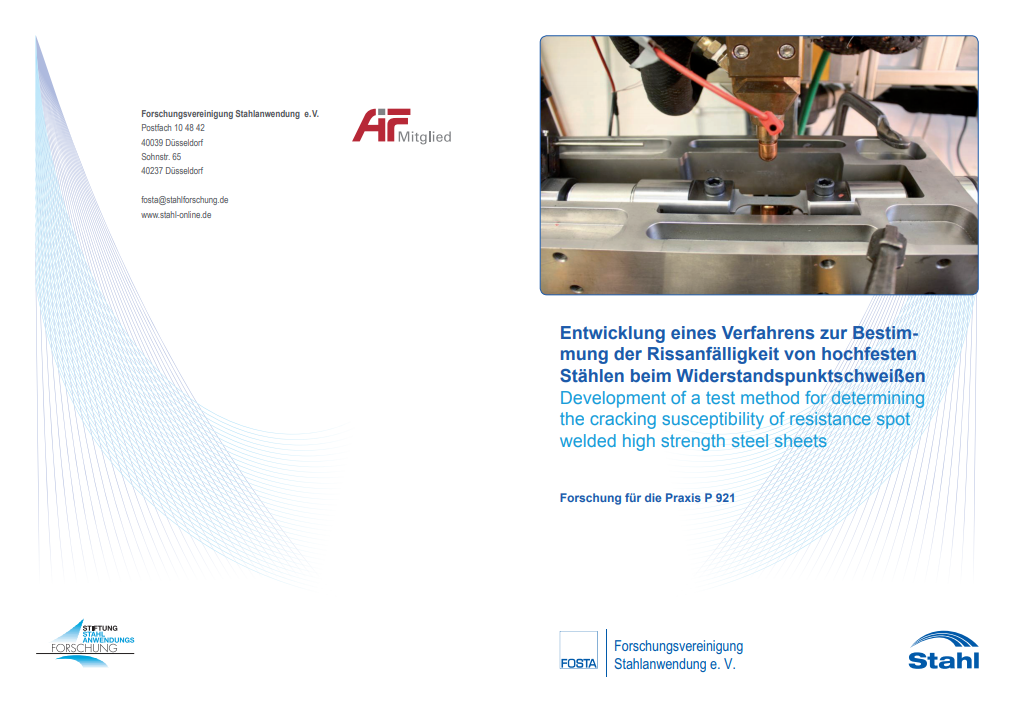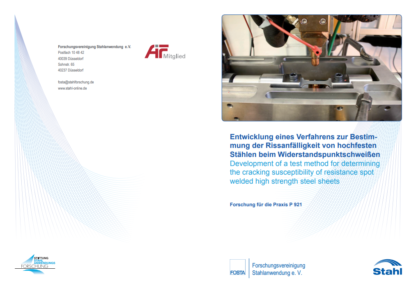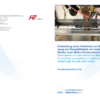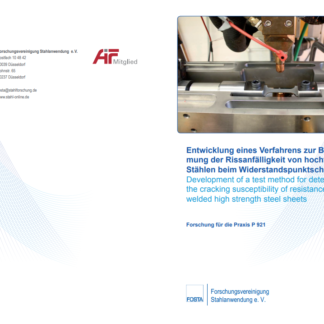Description
P 921 – Development of a test method for determining the cracking susceptibility of resistance spot welded high strength steel sheets
In order to respond to the challenge of the intensifying energy crisis and to meet customer requirements for automobiles such as weight reduction for energy saving and enhancement of passenger safety, new materials have to be applied in automobile manufacture. The complex microstructure and the advanced mechanical properties of these steel grades lead to an increased susceptibility to weld cracking especially during resistance spot welding.
Especially for small and medium-sized companies, which are not capable of performing complex and expensive welding tests before serial production, knowledge of the cracking susceptibility of the applied steels is of major economic importance. By providing a both easy to perform and material-independent method, also small and medium-sized companies get an opportunity to rapidly evaluate the cracking susceptibility of their resistance spot welded material combinations.
Therefore, the objective of the research project is the development of a simple and manufacture-oriented method for determining the cracking susceptibility of spot welded advanced high strength steel sheets.
The method developed uses an experimental approach to determine the formation of cracks for various advanced high strength steels and steel combinations. Samples are being put under external loads before welding. A hydraulic device is used, which applies define loads to the tapered sample. The resulting stress field increases the rate of crack formation to a level, which allows a comparison of occurring crack lengths between the materials. The use of a mobile device for stressing the samples allows the use of the existing plant technology.
After normalizing the resulting crack lengths to the yield strength and the sample cross section, a ranking, respectively a classification of the analyzed high strength materials regarding their cracking susceptibility during resistance spot welding can be established.
The method ensures the evaluation of cracking susceptibility and processing security of future steels/material combinations. It can as well be used for the generation of a data basis for further analysis of crack formation during resistance spot welding.
Only available in german language.
Published in:
January 2017
FOSTA – Research Association for Steel Application




